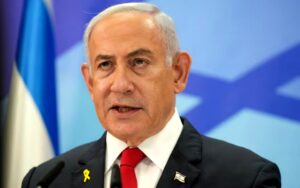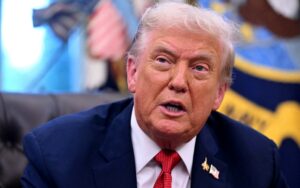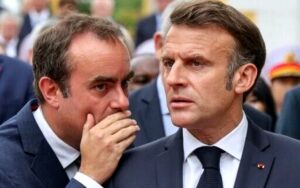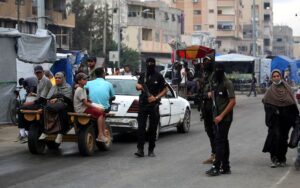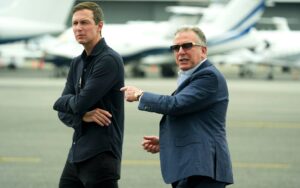Putin is inaugurating a large gas field in Siberia that allows for increased exports to China

The Russian President Vladimir Putin inaugurated a major new gas field in Siberia, Wednesday, which will help drive a planned increase in Russia’s gas supplies to China.
The Kovikta gas field will flow into the (Power of Siberia) pipeline that transports Russian gas to China, and it will be the largest in eastern Russia, with recoverable reserves of 1.8 trillion cubic meters.
The launch of the field is part of Russia’s strategy to divert its gas exports to the east after the European Union reduced its dependence on Russian energy in response to its war against Ukraine.
Putin hailed the new gas field as a significant event for Russia’s energy industry and economy as a whole.
He joined a video conference with workers at the site and issued a start work command, marking the opening of the project.
Russia began selling natural gas to China at the end of 2019 through the (Power of Siberia) pipeline, which produced about ten billion cubic meters of gas in 2021 and is scheduled to reach its full capacity of 38 billion cubic meters in 2025.
Russia is currently ranked third as the third largest gas supplier to China.
Russia also plans to build another major pipeline (Power of Siberia 2) through Mongolia, with the aim of selling an additional 50 billion cubic meters of gas annually.
Putin said last week that these projects would allow Russia to increase gas sales to China to 48 billion cubic meters annually by 2025 and to 88 billion cubic meters by 2030.
Former Russian President Dmitry Medvedev made a surprise visit to China on Wednesday for talks with President Xi Jinping, which Medvedev said included discussing a borderless strategic partnership that the two countries announced in February.
Putin stressed that his country will continue to develop its military capabilities, including the combat readiness of its nuclear forces, in light of the conflict in Ukraine and the crisis with Western countries.
“The armed forces and combat capabilities of our armed forces are increasing constantly and every day,” Putin said during a meeting with senior military officers, “This process will of course evolve”.
“We’ll continue to maintain and improve the combat readiness of our nuclear forces” in various fields, he added.
He announced, for example, that new intercontinental hypersonic missiles, the Zircon model, would enter service at the beginning of January, noting that they belong to the new group of weapons that Moscow has developed in recent years.
Putin was speaking in front of a group of senior officers as part of a meeting aimed at defining the goals of the Russian army for the year 2023 as it continues its attack on Ukraine.
Russian Defense Minister Sergei Shoigu said one of the priorities would be “to continue carrying out the special operation in Ukraine until all its goals are fulfilled”.
He also confirmed that Moscow would deploy naval bases dedicated to “support ships, emergency services and marine maintenance units” in the occupied Ukrainian cities of Berdyansk and Mariupol.
Shoigu considered that in Ukraine, “the Russian military is confronting the combined forces of the West,” adding that “the growing presence of the West at our borders and the borders of Belarus, and the West’s intention to extend military operations in Ukraine to the maximum extent with the aim of weakening our country, are of particular concern”.
Sergei Shoigu considered it necessary to increase the number of the Russian army to 1.5 million soldiers, 350 thousand more than the target of 1.15 million set by President Vladimir Putin last August.
The Minister also proposed a gradual increase in the age ceiling on the basis of which an individual is required to perform military service (compulsory and lasts one year in Russia): between 21 and 30 years, compared to 18 to 27 years now.
Finally, Shoigu called for the creation of two new military-administrative entities in northwest Russia.
And Vladimir Putin replied, “I agree with your suggestions regarding the upcoming structural changes of the armed forces,” stressing that these steps will be implemented without harm to the Russian society and economy, and without leading to the militarization of the country.
Also, Putin briefly saluted the Russian soldiers killed during the attack in Ukraine.
“Certainly, military operations are always associated with tragedies and human losses,” he said, “But since it is inevitable, it is better to do it today than tomorrow”.
He added that the conflict in Ukraine was a “common tragedy”, but that Russia was not responsible for its outbreak.
He also pointed out that there is no problem for Moscow in financing the military campaign, despite Western sanctions.
“We’ve no limits on financing,” the Russian president said.
The country and the government give everything the army asks for exactly what he asks for”.
In September, a military mobilization was announced after military setbacks for the Russian forces.
He mentioned that 300,000 Russians had been mobilized since then, pointing out that a part of those were fighting.
He added that 150,000 of those who have been mobilized are receiving training in military bases.
It’s a sufficient reserve to carry out operations, and a strategic reserve that is not used in military operations.

